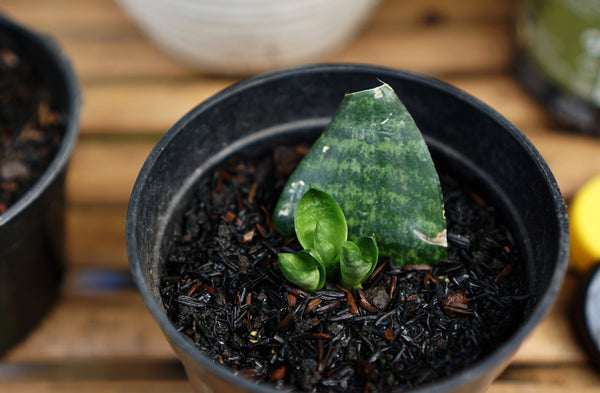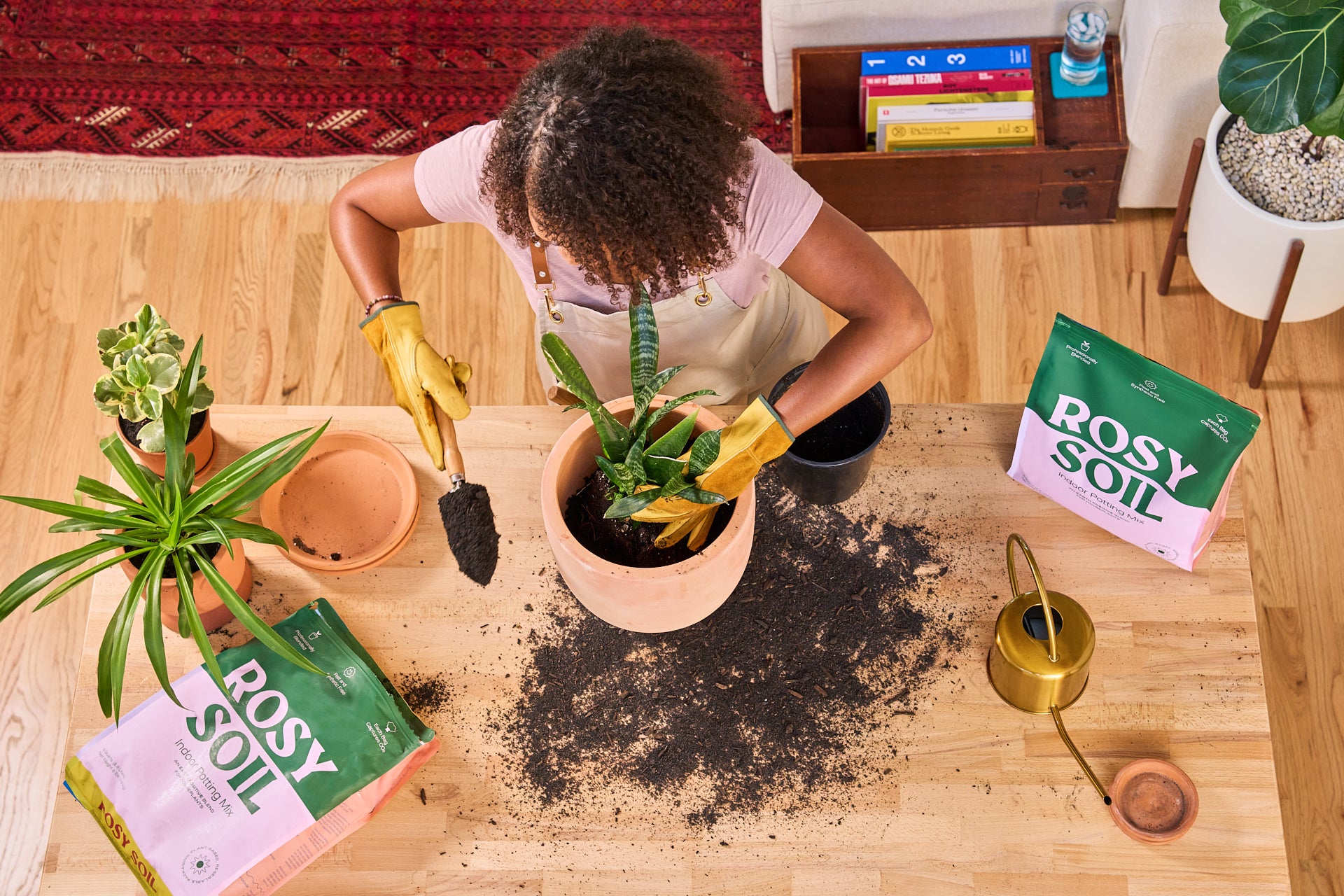Use these four tried and tested methods to propagate snake plant:
Let’s explore each one in detail.
We’ll also answer two FAQs about propagating snake plants.
Also Check Out
|
How To Propagate Snake Plant: 4 Simple Ways
Snake plant (Dracaena trifasciata, formerly Sansevieria trifasciata) is a low-maintenance succulent and popular house plant.
To propagate snake plant cuttings, try these four DIY methods:
1. Water Propagation
Follow these steps:
- Snip off a leaf (close to the soil) from the mother plant.
- Place the bottom of the sansevieria cutting in water, covering 25% of the leaf cutting.
- Keep it in sufficient indirect sunlight.
- Change the water weekly.
- Optional: once roots sprout, transfer to soil.

Pros
- Simple DIY method
- Root growth is visible
Cons
- Snake plant cutting from variegated varieties may not retain variegation. Propagate by division for variegated snake plants.
- Slowest propagation method
2. Soil Propagation
To propagate sansevieria in soil:
- Cut off a single leaf near the soil line.
- Snip the cut leaf into pieces (each about 2 inches).
- Let leaf cuttings callus for a couple of days. A callus is a soft, dry, whitish tissue that forms over the leaf’s cut surface when the cut ‘heals.’
- Plant each leaf cutting into well-draining potting soil like Rosy’s snake plant soil.

Pros
- No need to keep root cuttings in water
- Suitable for mixing different varieties (Sansevieria cylindrica, Sansevieria moonshine) in one pot
Cons
-
New plants may not have variegations
- Root growth isn’t visible — unless you dig up the plant
3. Plant Propagation by Division
Use these steps:
- Lay the parent plant down and slide out of the pot.
- Use a sharp knife, scissors, or shears to divide the root clump of the mother plant into a desired number of sections.
- Each section should have at least three rhizomes, a leafy top, or a snake plant pup attached. (Note: A rhizome is an underground stem that sends out roots and shoots.)
- Plant the sections into well-draining pots using potting soil like Rosy.

Pros
-
Faster than snake plant leaf propagation
New leaves retain variegation of the original plant
Cons
- Requires a large snake plant with multiple growths
4. Rhizome Propagation
For this propagation process:
- Slide your plant out of the pot.
- Locate rhizomes under the soil near the root system.
- Cut off the rhizome from the base of the plant.
- Allow the rhizome cutting to callus (1-2 days) to prevent root rot.
- Once calluses form, repot the rhizome in Rosy potting mix.

Pros
- Fast propagation
- You don’t have to divide the mother plant
- Suitable for variegated snake plants
Cons
- You need to uproot the parent plant. This might damage the plant if you aren’t careful.
2 Snake Plant Propagation FAQs
Some common snake plant propagation questions include:
1. When Will the New Snake Plant Start Growing?
In the right conditions, the new plant may take six to eight weeks for root growth.
For an indoor plant without sufficient indirect light, new growth may take longer.
2. Why Won’t My Snake Plant Grow?
Your new plant may be getting insufficient light, water, or nutrients, or excessive direct sunlight.
Follow these tips instead:
- Provide sufficient bright indirect sunlight to the propagated plant.
- Avoid overwatering and root rot. Only water when the top 1-2 inches of soil is dry.
- Use a new pot with a drainage hole.
- Instead of traditional soil, use Rosy — a nutrient-rich, well-draining soil perfect for snake plant care.
Grow Happier, Healthier Snake Plants!
Use the four ways we covered to propagate snake plants successfully.
If you’re transplanting the cutting to soil, give Rosy’s snake plant potting mix a shot. It optimizes drainage, boosts aeration, and delivers nutritious food for your growing snake plant.




